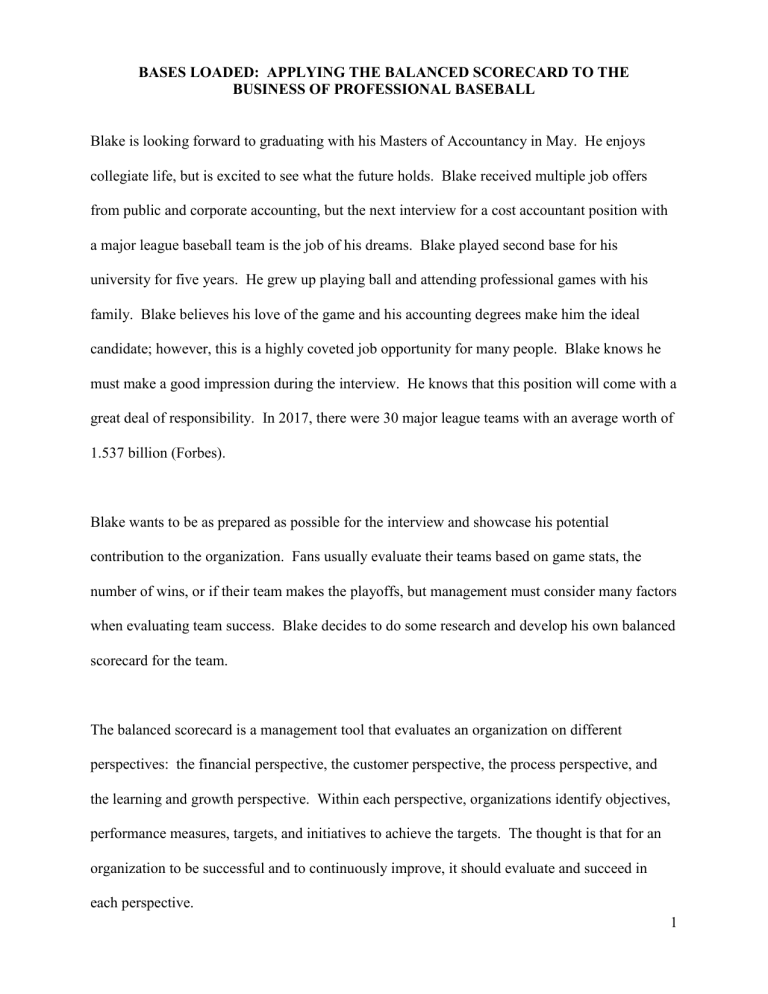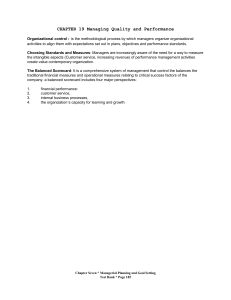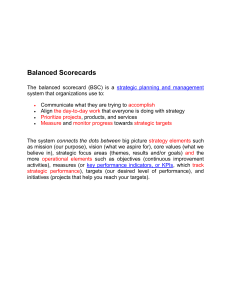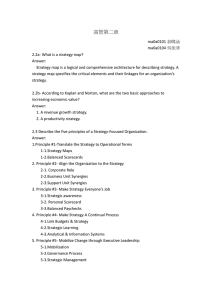
BASES LOADED: APPLYING THE BALANCED SCORECARD TO THE BUSINESS OF PROFESSIONAL BASEBALL Blake is looking forward to graduating with his Masters of Accountancy in May. He enjoys collegiate life, but is excited to see what the future holds. Blake received multiple job offers from public and corporate accounting, but the next interview for a cost accountant position with a major league baseball team is the job of his dreams. Blake played second base for his university for five years. He grew up playing ball and attending professional games with his family. Blake believes his love of the game and his accounting degrees make him the ideal candidate; however, this is a highly coveted job opportunity for many people. Blake knows he must make a good impression during the interview. He knows that this position will come with a great deal of responsibility. In 2017, there were 30 major league teams with an average worth of 1.537 billion (Forbes). Blake wants to be as prepared as possible for the interview and showcase his potential contribution to the organization. Fans usually evaluate their teams based on game stats, the number of wins, or if their team makes the playoffs, but management must consider many factors when evaluating team success. Blake decides to do some research and develop his own balanced scorecard for the team. The balanced scorecard is a management tool that evaluates an organization on different perspectives: the financial perspective, the customer perspective, the process perspective, and the learning and growth perspective. Within each perspective, organizations identify objectives, performance measures, targets, and initiatives to achieve the targets. The thought is that for an organization to be successful and to continuously improve, it should evaluate and succeed in each perspective. 1 BASES LOADED ASSIGNMENT (Complete the following items with your partner for your assigned team.) 1. Identify the benefits of a balanced scorecard. Provide a 250 word summary including an example of company that has successfully implemented it. Support your answer with at least one additional reference to the ones provided: Robert S. Kaplan and David P. Norton, “Transforming the Balanced Scorecard from Performance Measurement to Strategic Management: Part I,” Accounting Horizons, Volume 15 (1), 2001. Robert S. Kaplan and David P. Norton, “Transforming the Balanced Scorecard from Performance Measurement to Strategic Management: Part II,” Accounting Horizons, Volume 15 (2), 2001. 2. Blake is interviewing for a job interview with your assigned baseball team. a. What do you think is that team’s vision and strategy? Provide a 250 word answer with factual team information, which may include, but is not limited to, team financial value, annual revenue, player training, and fan base and fan satisfaction. Support your answer with outside references. b. Develop a balanced scorecard for that team based on the vision and strategy. For each perspective, identify at least three objectives along with specific measures, and targets. For each Perspective, provide your answer in the following format: Perspective: Objective Measure Target 3. Design a strategy map based on your unique balanced scorecard. Balanced scorecards should include lead and lag measures. Lead measures drive future performance, i.e., 2 employee training. Lag measures are outcome measures, i.e., increased profits. Link your objectives in a strategy map. A strategy map is a graphic representation of the balanced scorecard that links the objectives and measures by cause-and-effect relationships. 4. Create a two minute elevator pitch that should address the specific benefits to your baseball organization for utilizing a balanced scorecard. (Pitch your ideas! How is the scorecard for your team unique from other baseball organizations? Convince management that the balanced scorecard is a management tool that should be implemented.) Play Ball! Resource list: Attendance data: www.baseballpilgrimages.com Financial data: https://www.forbes.com/pictures/mlm45gdfgj/baseballs-most-valuable/#1905e1d5692b Financial data: https://www.statista.com/statistics/193637/franchise-value-of-major-league-baseball-teamsin-2010/ Team standings: www.ESPN.com Team performance: www.teamrankings.com Minor league affiliates data: www.thebaseballcube.com 3



